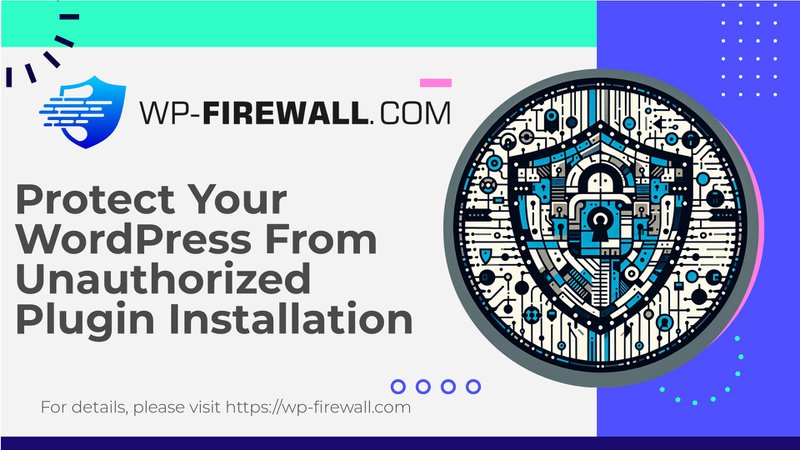
Understanding the SecuPress Free ≤ 2.3.9 Broken Access Control Vulnerability
On 28 April 2025, security researchers disclosed a significant flaw in the SecuPress Free WordPress plugin (versions ≤ 2.3.9). The vulnerability, tracked as CVE-2025-3452, allows any authenticated subscriber to install arbitrary plugins—effectively bypassing WordPress’s built-in capability checks. In practical terms, a low-privileged user can escalate their privileges and embed backdoors, malware, or additional attack tools on your site.
In this deep-dive, we’ll:
- Examine the root cause and exploitation path
- Evaluate the real-world impact and risk
- Describe the official fix and best mitigation strategies
- Show how WP-Firewall can protect your site now and in the future
CVE-2025-3452 at a Glance
| Attribute | Details |
|---|---|
| Vulnerability ID | CVE-2025-3452 / PSID 792fcc2482c1 |
| Plugin | SecuPress Free |
| Affected Versions | ≤ 2.3.9 |
| Fixed Version | 2.3.10 |
| Vulnerability Type | Broken Access Control (OWASP A5) |
| Required Privilege | Subscriber |
| CVSS v3.1 Score | 6.5 (Medium) |
| Disclosure Date | 28 April 2025 |
| Researcher | mikemyers |
Broken Access Control refers to any failure in enforcing proper authorization checks. In a well-configured WordPress site, subscribers can only manage their own profiles, read content, and perhaps leave comments. They absolutely cannot install or activate plugins—that privilege belongs to Administrators.
When a plugin introduces a broken access control flaw, it either:
- Omits current_user_can() checks
- Skips nonce verification (check_admin_referer())
- Fails to validate request origin
This oversight opens a door for unauthorized actions.
2.1 Root Cause
In SecuPress Free ≤ 2.3.9, a routine that handles plugin installation requests did NOT verify the user’s capabilities. Specifically:
- An AJAX endpoint (e.g., admin-ajax.php?action=secupress_install_plugin) accepted requests from any logged-in user.
- The code never called current_user_can('install_plugins') or validated an admin nonce.
- As long as the user was authenticated (even as a Subscriber), they could supply a plugin ZIP URL or slug.
- The routine fetched and installed the plugin—escalating the subscriber’s privileges stealthily.
// Hypothetical vulnerable snippet from SecuPress <=2.3.9
add_action( 'wp_ajax_secupress_install_plugin', function() {
$plugin_slug = sanitize_text_field( $_POST['slug'] );
// NO capability check here!
// NO nonce verification here!
$upgrader = new Plugin_Upgrader();
$upgrader->install( "https://downloads.wordpress.org/plugin/{$plugin_slug}.zip" );
wp_send_json_success();
});2.2 Required Privilege
- Minimum Role: Subscriber
- Effect: Plugin installation is reserved for install_plugins capability which only Administrators have by default.
Because the SecuPress code skipped this check, any subscriber could press “Install” and add new code to your site.
3.1 Privilege Escalation
Once a subscriber can install plugins, they can:
- Drop a malicious plugin embedding a backdoor
- Elevate themselves to administrator by installing a user-management plugin
- Hide activity via log-cleaning plugins
3.2 Malware Injection
Arbitrary plugin installation allows an attacker to load plugins that:
- Execute PHP code on demand
- Communicate with command-and-control servers
- Harvest user data, credit cards, or personal information
3.3 Supply Chain Attack
Even if you run a small blog, a rogue plugin can:
- Infect visitors with drive-by downloads
- Redirect traffic to phishing or ad-fraud sites
- Leverage your domain reputation for spam campaigns
4.1 CVSS v3.1 Breakdown (Score: 6.5)
| Attribute | Details |
|---|---|
| Vulnerability ID | CVE-2025-3452 / PSID 792fcc2482c1 |
| Plugin | SecuPress Free |
| Affected Versions | ≤ 2.3.9 |
| Fixed Version | 2.3.10 |
| Vulnerability Type | Broken Access Control (OWASP A5) |
| Required Privilege | Subscriber |
| CVSS v3.1 Score | 6.5 (Medium) |
| Disclosure Date | 28 April 2025 |
| Researcher | mikemyers |
Score Interpretation
A 6.5/10 reflects a medium severity. While not trivial, it is highly exploitable by any subscriber-level account. In community sites with open registration, the risk is even greater.
4.2 OWASP Top 10 Alignment
- A5: Broken Access Control
- This vulnerability is a textbook example of missing authorization on critical functionality.
5.1 Update to SecuPress Free 2.3.10 or Later
The plugin author released version 2.3.10 on 28 April 2025. This update restores proper capability checks and adds a nonce:
add_action( 'wp_ajax_secupress_install_plugin', function() {
// Enforce administrator role
if ( ! current_user_can( 'install_plugins' ) ) {
wp_send_json_error( 'Insufficient privileges', 403 );
}
// Verify genuine request origin
check_admin_referer( 'secupress-install-plugin' );
// Safe to install now
$plugin_slug = sanitize_text_field( $_POST['slug'] );
$upgrader = new Plugin_Upgrader();
$upgrader->install( "https://downloads.wordpress.org/plugin/{$plugin_slug}.zip" );
wp_send_json_success();
});5.2 How to Update
- Dashboard → Plugins → Update available.
- If auto-updates are disabled, click “Update Now.”
- Verify plugin version in Plugins list reads 2.3.10 or above.
5.3 Hardening Your Site
- Limit user registration to trusted roles only.
- Enforce Two-Factor Authentication for any contributor role.
- Regularly review your Users list for unknown accounts.
Even after patching, it’s wise to adopt a multi-layered security posture. WP-Firewall provides:
6.1 Managed Web Application Firewall (WAF)
- Real-time rule sets protecting against SQLi, XSS, LFI, RCE.
- Layer 7 filtering for known WordPress attack signatures.
6.2 Continuous Malware Scanning
- Automated file integrity checks comparing to official repository hashes.
- Alerting and quarantine of suspicious files immediately.
6.3 OWASP Top 10 Risk Mitigation
A built-in rule engine tuned specifically for WordPress exploits—covering A1 through A10 with priority on access control and authentication bypasses.
6.4 Automated Virtual Patching
When new vulnerabilities (like CVE-2025-3452) are disclosed, WP-Firewall can deploy virtual patches at the firewall level—blocking exploit attempts even before you apply an official update.
6.5 Incident Response & Reporting
- Dashboard alerts summarizing blocked attacks.
- Detailed logs for forensic analysis.
- Email/SMS notifications for critical events.
Empower Your Site with Essential Defense
Secure Your Foundation with WP-Firewall Free Plan
Experience zero-cost protection that covers every WordPress site under your management. With the Basic (Free) tier, you get:
- Managed firewall and unlimited bandwidth
- Web Application Firewall rules updated daily
- Automated malware scanning and OWASP Top 10 risk mitigation
Start fortifying your site today—sign up for the WP-Firewall Free Plan:
👉 https://my.wp-firewall.com/buy/wp-firewall-free-plan/
- Least PrivilegeNever assign Administrator or Editor roles lightly.
Use subscriber or contributor roles sparingly and revoke access when no longer needed. - Regular UpdatesKeep WordPress core, plugins, and themes up to date.
Enable automatic minor-version updates for WordPress. - Strong AuthenticationEnforce complex passwords and Two-Factor Authentication for all admin-level users.
Consider reCAPTCHA or similar solutions on your login forms. - Code Reviews & AuditsFor custom or third-party plugins, review code for capability checks and nonces.
Use a staging environment for testing before deploying to production. - Monitor User ActivityLeverage plugins or services that track login attempts and role changes.
Immediately investigate unusual or repeated failed logins. - Virtual PatchingAdopt a WAF with virtual patching to shield unknown or zero-day flaws.
This buys time to test and apply official fixes in a controlled way.
The SecuPress Free ≤ 2.3.9 vulnerability is a sobering reminder: any missing authorization check can have catastrophic consequences. Even a user account as innocuous as a “subscriber” can become the entry point for a full site takeover.
Key takeaways:
- Always update to the latest plugin versions.
- Enforce capability checks (current_user_can()) and nonces in every AJAX/action hook.
- Adopt a layered security approach: firewall, malware scanner, virtual patching.
- Monitor and harden user roles diligently.
By combining vigilant patch management with an advanced Web Application Firewall like WP-Firewall, you can stay one step ahead of attackers—protecting your content, your customers, and your reputation.
Stay safe, and remember: in security, every check counts.

